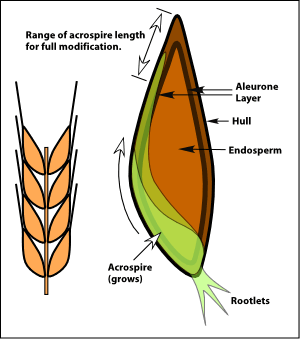When using unmalted barley: does it change the brew in any way? I would assume it can be roasted as well. My thought process it to grow a bushel and malt half or so.
Yes, significantly, though you want to be careful about unmalted grain, as it tends to produce starch and protein hazes in large amounts. There are styles which depend on using larger amounts of unmalted grain, most notably lambics (which can be up to 50% raw wheat), but it is important to recall that almost all beers use malted grain for the base (the major exceptions being millet beer, chicha, and sake). Unmalted grain is mostly long-chain starches, and hasn't developed a significant amount of some crucial enzymes (e.g., beta amylases), which means it can't self-convert the starches and dextrins to fermentable sugars. This is why unmalted grain is seen as an adjunct rather than a main component.
Raw barley (usually flaked), in small amounts, can improve the body a beer, provided that the base malt has enough
diastatic power to convert it. Because of haze issues, it is mostly used in dark beers. Roasted barley, used in small to moderate amounts, is a mdefining component of modern stouts, where it gives a very dark color and strong roasted flavor; smaller amounts are used to give a red color to light colored beers. As I said earlier, lambics use large amounts of raw wheat, but like with hefeweizen, a certain amount of haze is an expected part of the style (a true wild lambic can only come from a specific region of Belgium in any case, though with the appropriate cultures you can imitate it effectively).















































![Craft A Brew - Safale S-04 Dry Yeast - Fermentis - English Ale Dry Yeast - For English and American Ales and Hard Apple Ciders - Ingredients for Home Brewing - Beer Making Supplies - [1 Pack]](https://m.media-amazon.com/images/I/41fVGNh6JfL._SL500_.jpg)











